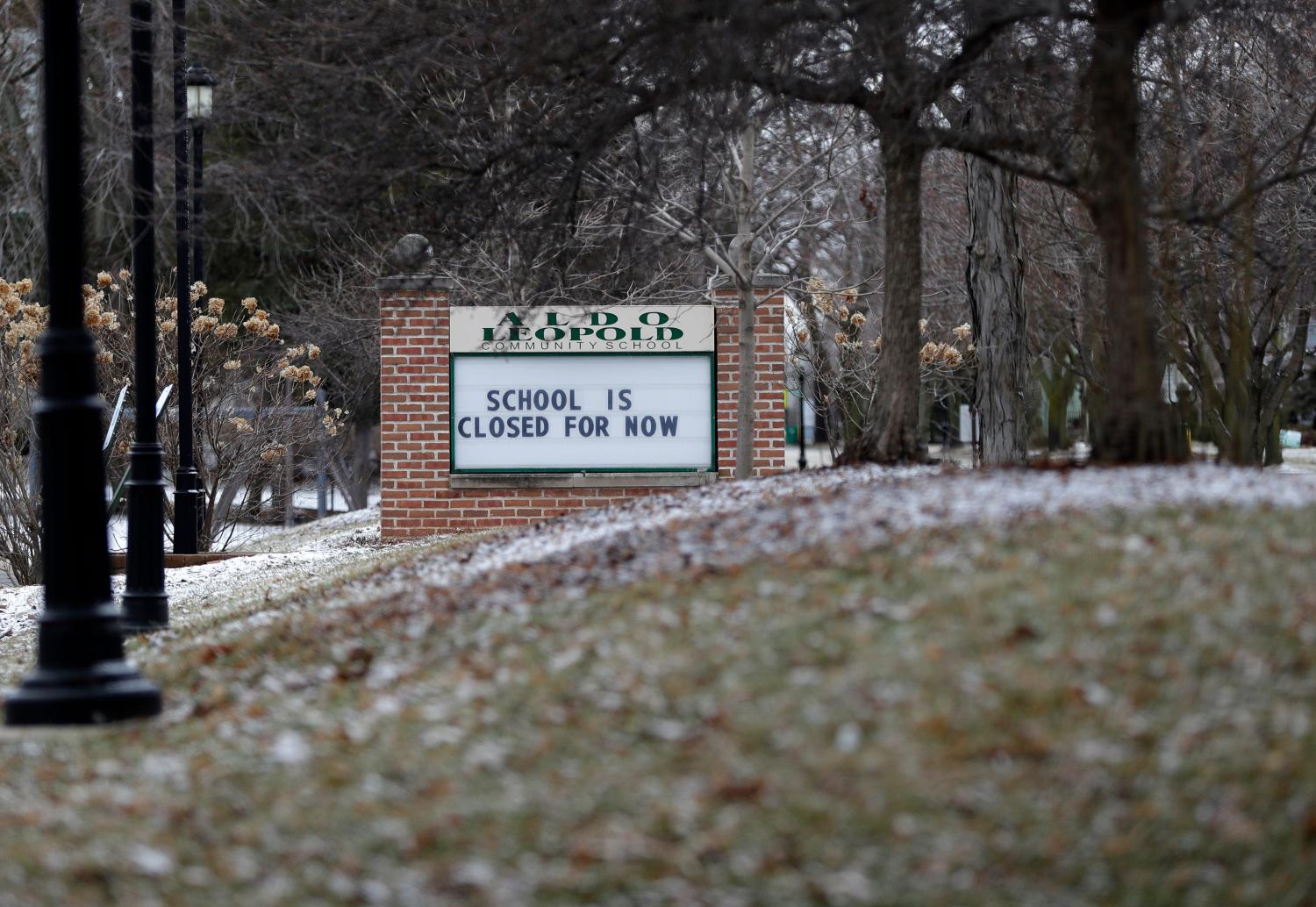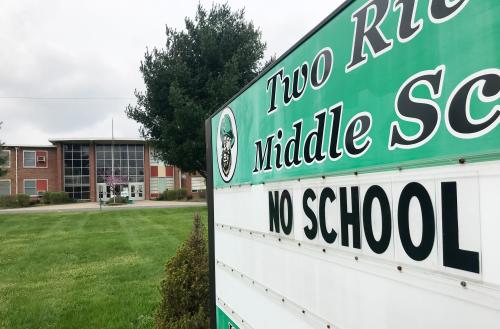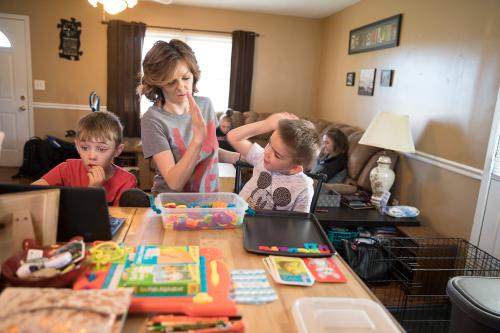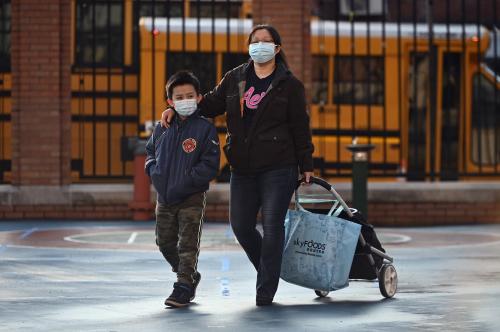The social and economic effects of COVID-19 will be severe and touch every corner of the country. But there is much that can be done to soften the blow and put ourselves in a better situation for the long term. Schools have a particularly important role to play.
To see what schools can do, it is useful to think about our broad social and economic needs. I argue we have four needs right now:
- Protection. This means stopping the spread of the virus and reinforcing the safety net for everyone to prevent side effects. Everyone needs to be able to meet their most basic needs, such as food and housing.
- Stability. While we need to reinforce the social safety net, it would be even better to prevent people from needing it to begin with. Maintain income and employment.
- Stimulus. Even after the crisis subsides, people will be reluctant to spend money and businesses will be reluctant to bring workers back. The emergency relief package is aimed at this.
- Preparation (for the long run). This means taking steps to prevent future pandemics and to facilitate better responses, and putting ourselves in a good long-term position to bounce back.
Preparation is the least urgent of these, but it turns out that there are many ideas out there, especially in education, that address multiple needs simultaneously. Policies that promote both stability and stimulus and preparation, for example, should be top priorities.
The emergency relief package currently being considered in Congress seems to address many of these needs. But it is mostly about broad spending levels. In the coming weeks, there will be much more conversation about what to do with those funds and about what other policy changes are needed at the state and federal levels.
Below are some specific proposals for how schools can help meet these needs.
Ramp up remote teaching as fast as possible.
It is important to recognize that the vast majority of states have a constitutional obligation to make education broadly available. Most schools are trying to follow this principle; in almost heroic fashion, teachers have learned entirely new ways of teaching and even created ways to get food to students safely. However, as we recently learned in a report from the Center for Reinventing Public Education, many districts have only pointed parents to other resources, without teacher-led instruction. Some of this is no doubt related to inequities in school funding and technology that make it easier for some districts than others.
One reason for ramping up remote learning as fast as possible is concern that it might exacerbate achievement gaps. As I pointed out in a recent Chalkboard post, disadvantaged groups are less able to utilize computers and internet access, which schools may rely on with remote learning. However, the gaps are also likely to rise if schools limit instruction for everyone; advantaged families will be able to use their resources to access enrichment activities no matter what schools do, so it’s better schools do what they can. To be clear, the achievement gap problem is a real concern and schools will need to get creative to address this.
Remote teaching also provides some normalcy for students. Even at the college level, where I teach, most students have been relieved to be back in their routine and in touch with classmates and educators in a class-like setting. They feel productive again. Having some type of synchronous (live) video interaction, at least occasionally, can be especially beneficial as this goes furthest to mimic in-person social interactions.
Provide guidance to schools regarding special education.
This is related to the above point about achievement gaps. It appears that many districts are not providing educational services in part because they are concerned about compliance with federal special-education laws. Some have suggested that there is already some flexibility in the law, but districts need guidance to clarify that. Education Secretary Betsy DeVos issued guidance on this point over the weekend, but it will likely do little to clear up confusion or allay district fears that their actions will be noncompliant. There has also been some talk of giving DeVos more latitude to provide waivers for certain parts of the federal IDEA (though not the civil rights aspects, as I understand it). Others with more special-ed expertise have suggested that waivers may not be necessary, and that the law already allows schools to make a “good faith effort.” I don’t know what exactly is the best approach here, except that: Schools should make every effort to serve students with disabilities, and not providing instruction to anyone because of these federal laws is an unreasonable response.
Subsidize school operating funding for next year.
This is probably the most important step the federal government will have to take. State government revenues are about to collapse. It seems like that this situation will be worse than the 2008 financial crisis, in which state and local governments lost nearly $300 billion in tax receipts (over four years), the largest share of which goes to fund schools. The emergency relief package covers about half that, and $30 billion is directly targeted to education (including colleges). This is a good start, and a sensible step until we know more about the long-term prognosis, but more will be needed unless this clears up faster than expected.
Waive some rules.
Schools are subject to an array of rules (including special education, as noted above). Most are well intentioned, and necessary to protect health, safety, and civil rights. However, the rules are designed for normal times—and these times are anything but normal.
President Trump has already announced the inevitable—that state standardized tests will not be required this year. Another obvious change is that states need to relax rules around instructional hours and days. Almost all states require at least 180 days of instruction per year (and days of virtual instruction do not count). Many have already moved to relax these rules. For those that do not follow suit, millions of students would be retained in their current grade. This would make little sense. While research is somewhat mixed about the effects that grade retention has on student outcomes, this evidence probably doesn’t apply in the present circumstances. More relevant is that holding everyone back is equivalent to requiring an extra year of school to graduate high school, which will no doubt reduce graduation odds.
Applying the instructional-time rules as they stand now does not seem sensible, especially as students were almost three-quarters of the way through the school year when the crisis started and there will be no standardized tests on which to make the usual judgments. Not allowing remote-learning time to count would also discourages schools from taking this essential step (see above).
Even if states waive the instructional-time rules, schools will still have retention decisions to make. A sensible approach would be to ask schools to determine student grade retention on a case-by-case basis, considering at least four factors: (a) whether students were doing so poorly at the time the crisis struck that they would likely have been held back anyway; (b) whether students had an opportunity to learn remotely during the crisis; (c) whether they were able to take summer school to catch up (more on this below); and (d) whether parents believe it is in the best interest of students to be held back. Grade retention has always been a fraught issue and it is made even more complex under the present circumstances.
This may be more challenging at the high school level, where instructional time is specified in Carnegie Units, which are defined in terms of “contact time.” Carnegie Units also affect things like school accreditation. This, too, will likely require changes in law, policy, or waivers at multiple levels of government. High school students are especially vulnerable because of the structure of the high school curriculum, and the fact that many are nearing the graduation and potential college enrollment. They have less time to “catch up” before these key decision points.
Here is another example of a rule that may need to be re-examined: Anecdotally, some districts have rules against teachers interacting with students outside of schools, including in social media and online platforms. That seems to make sense during normal times, but it is the opposite of what we need now. Not all rules should be waived, but some clearly need to be.
Fund summer school.
As I wrote last week, summer school is an old-fashioned, but possibly very useful, way to help students get back on track. This makes sense even if schools remain closed through the summer; in that case, summer school would be virtual, too. As above, this is helpful for stability, stimulus, and preparation.
Broaden internet access.
There is already a proposal to make the federal E-Rate Program more flexible and to allow the use of funds to provide internet access and connectivity in students’ homes. That’s a start. It could also be part of a broader infrastructure investment, moving toward universal internet access. Other countries have nearly complete access to Wi-Fi. The E-Rate flexibility could be helpful in providing instruction now, and therefore some stability. The move toward universal internet would help prepare us for providing education under future health emergencies—not to mention the many broader benefits, such as equalizing economic opportunity in the information age.
Fund tutoring for those who fall behind.
If the coronavirus pandemic continues later into the year, as seems increasingly likely, one way to address the very real equity concern is to fund tutoring for students who fall behind. Summer school will not be enough. The federal government could provide funds that could be used in one of two ways. First, they could hire additional paraprofessionals (teacher aides) who could be tasked with providing additional support to students, especially those with special needs. Second, there is a growing number of private and virtual tutoring programs available. Either approach could be helpful right now to help students catch up. This might also address the above issue with instructional time and Carnegie Units. More broadly, it would also help with stimulus (hiring more educators) and preparation (helping students continue to learn).
This is going to be a difficult time. Let’s work together, be patient with others, and act creatively to meet the basic needs of our students.
The Brookings Institution is committed to quality, independence, and impact.
We are supported by a diverse array of funders. In line with our values and policies, each Brookings publication represents the sole views of its author(s).








